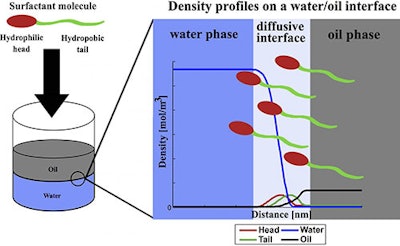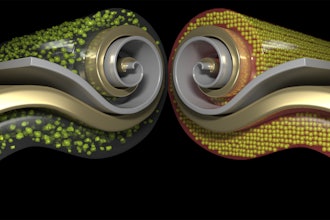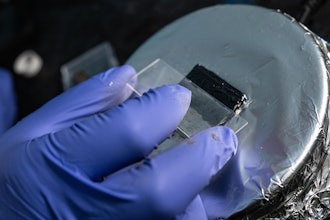
Chemical engineer, Walter Chapman and his team at Rice University have modified a thermodynamic modeling method, called the density gradient theory (DGT) in a way that they believe will allow oil producers to harvest hard to get to oil from wells that would otherwise be considered tapped out.
When used in oil wells, surfactants release oil so that it can be pumped to the surface by reducing the surface tensions between rock, water, and oil. It’s important for oil producers to know how a surfactant will react when used in oil recovery, and because it is costly and time-consuming to run experiments, models are used to predict these reactions.
However, DGT formulas have traditionally predicted reactions as if surfactants molecules are a single point rather than the complex chains they truly are.
 A surfactant is a surface active agent. When added to a mixture of water and oil, surfactant molecules tend to accumulate in the interface area. The modified density gradient theory developed by Walter Chapman's group at Rice University models surfactant molecules by bonding a hydrophilic head group with a hydrophobic tail group. That helps characterize different water/surfactant and oil/surfactant interactions to better describe their interfacial behaviors. (Xiaoqun Mu/Rice University)
A surfactant is a surface active agent. When added to a mixture of water and oil, surfactant molecules tend to accumulate in the interface area. The modified density gradient theory developed by Walter Chapman's group at Rice University models surfactant molecules by bonding a hydrophilic head group with a hydrophobic tail group. That helps characterize different water/surfactant and oil/surfactant interactions to better describe their interfacial behaviors. (Xiaoqun Mu/Rice University)Chapman says that this is a limitation of the models, adding, “The DGT model has never had the capability to describe how fluid properties are affected by the shape of the molecule.”
Because the DGT model is relatively simple, Chapman believed that even though the model’s “nature kept [them] from applying it to molecules with amphiphilic (surfactant) chain structures,” it could be extended to allow for the handling of surfactants.
Beyond incorporating the complexity of surfactants, the model also includes temperature, pressure, composition, and other conditions that may come into play when using a surfactant. The combination of these conditions provides a clearer picture of the physics involved between all of the molecules, giving engineers, and oil producers, a better understanding of the appropriate mixture to inject, and ultimately, increasing the amount of oil that can be squeezed out from between rocks.
Xiaoqun Mu, a Rice graduate student leading the research with Chapman, hopes others will continue to improve upon their modified model.
(Source: Rice University)






















